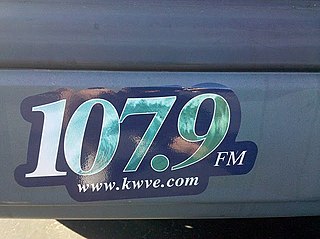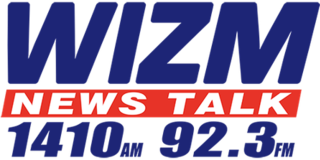
The Emergency Alert System (EAS) is a national warning system in the United States designed to allow authorized officials to broadcast emergency alerts and warning messages to the public via cable, satellite and broadcast television and AM, FM and satellite radio. Informally, Emergency Alert System is sometimes conflated with its mobile phone counterpart Wireless Emergency Alerts (WEA), a different but related system. However, both the EAS and WEA, among other systems, are coordinated under the Integrated Public Alert and Warning System (IPAWS). The EAS, and more broadly IPAWS, allows federal, state, and local authorities to efficiently broadcast emergency alert and warning messages across multiple channels. The EAS became operational on January 1, 1997, after being approved by the Federal Communications Commission (FCC) in November 1994, replacing the Emergency Broadcast System (EBS), and largely supplanted Local Access Alert systems, though Local Access Alert systems are still used from time to time. Its main improvement over the EBS, and perhaps its most distinctive feature, is its application of a digitally encoded audio signal known as Specific Area Message Encoding (SAME), which is responsible for the characteristic "screeching" or "chirping" sounds at the start and end of each message. The first signal is the "header" which encodes, among other information, the alert type and locations, or the specific area that should receive the message. The last short burst marks the end-of-message. These signals are read by specialized encoder-decoder equipment. This design allows for automated station-to-station relay of alerts to only the area the alert was intended for.

WKBT-DT is a television station licensed to La Crosse, Wisconsin, United States, serving the La Crosse–Eau Claire market as an affiliate of CBS and MyNetworkTV. Owned by Morgan Murphy Media, the station maintains studios on South 6th Street in downtown La Crosse, and its transmitter is located on Silver Creek Road in Galesville, Wisconsin.

KWVE-FM is a commercial radio station licensed to San Clemente, California, and broadcasting to Orange County, the Inland Empire and Northern San Diego County. It airs a Christian talk and teaching radio format, known as "K-Wave". The station is owned by Calvary Chapel Costa Mesa, with its studios in the church-owned KWAVE Building on West MacArthur Boulevard in Santa Ana.

WHUD is an adult contemporary music radio station licensed to Peekskill, New York, United States. The station is owned by Pamal Broadcasting and broadcasts at 50,000 watts ERP. Its transmitter facility is located in Philipstown, New York. WHUD's studios are located on Route 52 in Beacon, New York, along with other Hudson Valley Pamal stations. WHUD is responsible for the activation of the Hudson Valley area Emergency Alert System.
KRTV is a television station in Great Falls, Montana, United States, affiliated with CBS. It is owned by the E. W. Scripps Company alongside KTGF-LD, the local NBC affiliate, and is part of the Montana Television Network (MTN), a statewide network of CBS-affiliated stations. KRTV's studios and transmitter are located on Old Havre Highway in Black Eagle, just outside Great Falls.
A broadcast signal intrusion is the hijacking of broadcast signals of radio, television stations, cable television broadcast feeds or satellite signals without permission or licence. Hijacking incidents have involved local TV and radio stations as well as cable and national networks.

WZZY is a local radio station in Winchester, Indiana. The station is located on 98.3 on the FM dial and broadcasts at an effective radiated power of 3,000 watts. Studios and offices are located at the Whitewater Broadcasting complex on West Main Street in Richmond, Indiana. The tower is located in rural Randolph County off US 27, north of Lynn, Indiana and WZZY still conducts a lot of business out of an office in downtown Winchester.
WKAR-FM is a non-commercial public radio station in East Lansing, Michigan. It is owned by Michigan State University, along with sister stations WKAR and WKAR-TV. They are owned by Michigan State University, with studios in the Communication Arts and Sciences Building, at Wilson and Red Cedar Roads on the MSU campus.
KASU is a non-commercial public radio station licensed to Arkansas State University in Jonesboro, Arkansas, United States. Established in 1957, the station serves parts of northeastern Arkansas, southeastern Missouri and western Tennessee.

WHLA is an FM radio station licensed to La Crosse, Wisconsin. The station is part of Wisconsin Public Radio (WPR), and airs WPR's News Network, consisting of news and talk programming. WHLA also broadcasts regional news and programming from studios in the Whitney Center at the University of Wisconsin-La Crosse. WHLA ceased broadcasting in HD Radio on May 20, 2024.

WRQT is a radio station broadcasting an Active Rock format. Licensed to La Crosse, Wisconsin, United States, the station serves the La Crosse area. The station is currently owned by Mid-West Family Broadcasting. The station no longer broadcasts in HD Radio.

WIZM is an AM radio station broadcasting a News Talk Information format. Licensed to La Crosse, Wisconsin, United States, the station serves the La Crosse area. The station is currently owned by Mid-West Family Broadcasting, and features programming from CBS News Radio, Genesis Communications Network, Premiere Networks, USA Radio Network, and Westwood One.
WLCW is a radio station broadcasting a contemporary Christian format. Licensed to West Salem, Wisconsin, United States, the station serves the La Crosse area. The station is currently owned by Educational Media Foundation.
WEQL is a radio station broadcasting a contemporary Christian format. Licensed to La Crosse, Wisconsin, United States, the station serves the La Crosse area. The station is currently owned by The Salvation Poem Foundation.
WQCC is a commercial radio station broadcasting a country music format. Licensed to La Crosse, Wisconsin, United States, the station serves the La Crosse area. The station is currently owned by Magnum Communications.

WKTY is a radio station broadcasting a sports format. Licensed to La Crosse, Wisconsin, United States, the station serves the La Crosse area. The station is owned by Mid-West Family Broadcasting and features programming from Westwood One and Infinity Sports Network.

WKLJ is a radio station broadcasting a sports format. The station had previously run CNN news and prior to that, had simulcasted their FM sister station, WCOW-FM for many years. Licensed to Sparta, Wisconsin, United States, the station serves the La Crosse area. The station is owned by Sparta-Tomah Broadcasting Co., Inc. and features programming from ESPN Radio. It previously held the callsign WCOW from its inception until 1992.

WWIS-FM is a radio station broadcasting a classic country format. It is licensed to Black River Falls, Wisconsin, United States, the station serves the La Crosse, Wisconsin, area. The station is currently owned by WWIS Radio, Inc., and features programming from CBS News Radio.
WKBH-FM is a radio station broadcasting a classic rock and classic hits hybrid format. Licensed to Onalaska, Wisconsin, United States, the station serves the La Crosse area. The station is owned by Magnum Communications, Inc. as of July 31, 2020.

On February 11, 2013, the Emergency Alert System of five different television stations across the U.S. states of Montana, Michigan, Wisconsin, and New Mexico were hijacked, interrupting each television broadcast with a local area emergency message warning viewers of a zombie apocalypse. The message was subsequently declared as a hoax by local authorities and was reported to be a result of hackers gaining access to the Emergency Alert System equipment of various television stations.












